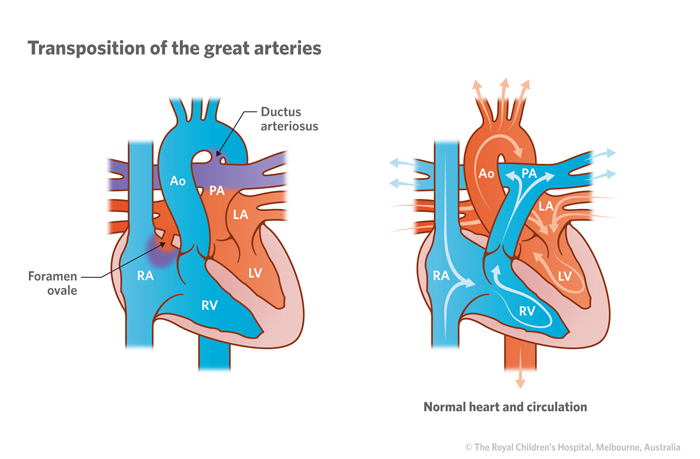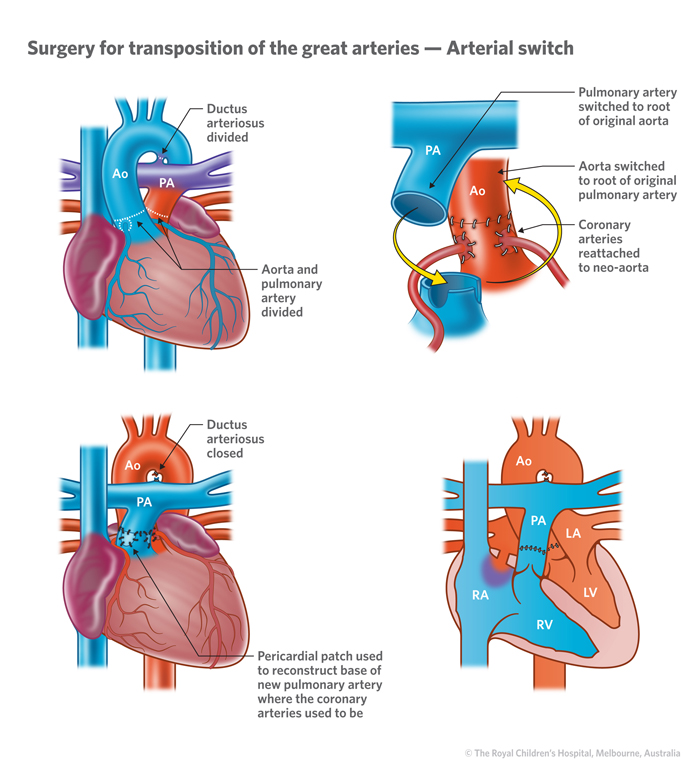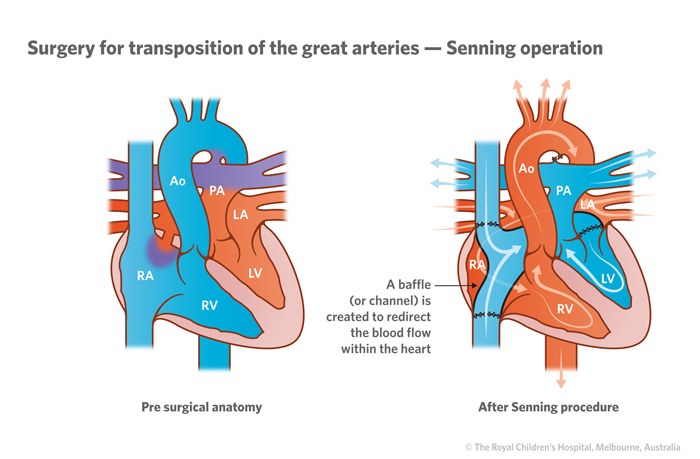The Aorta arises from the right ventricle and receives "blue"
blood, whilst the Pulmonary Artery arises from the left ventricle.
The baby becomes blue immediately after birth and needs urgent
treatment. Survival depends on the ductus or the Foramen Ovale
remaining open in the early days of life until treatment can be
applied. The Foramen Ovale can be enlarged with a catheter
procedure, called Balloon Septostomy, which is performed in the
first few days of life. This involves a catheter with a balloon at
the tip, which is passed from a leg vein until the balloon is in
the left atrium (across the Foramen Ovale). The balloon is then
inflated and the catheter is pulled back to the right atrium.

Go to
Normal Heart
Early surgery is essential and involves the " Arterial
Switch Operation", which is carried out in the first week or two of
life and corrects the abnormality. The small coronary arteries,
which feed the heart muscle with blood, need to be transferred as
well as the two Great Arteries (Aorta and Pulmonary Artery).
Until around 1980 this delicate surgery could not be performed
safely and an alternative procedure was used, redirecting blood
within the atriums. This was called a "Senning" operation. (The
"Mustard" operation was very similar.)

Senning Operation.
In this operation the blood from the SVC and IVC was redirected
to the left atrium and ventricle, while blood from the pulmonary
veins was channeled to the right atrium and ventricle. This
relieved Cyanosis but did not correct the original abnormality,
leaving the Right Ventricle pumping blood to the Aorta.
Eventually some patients may develop heart failure or other
problems after this type of surgery, which is now seldom used.
